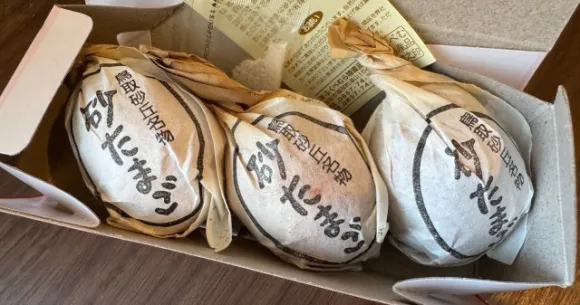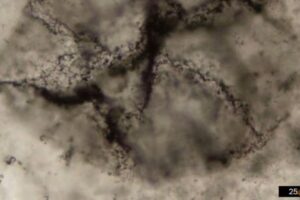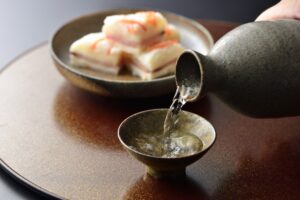
Our Tottori-born reporter buys some “sand eggs” cooked at insanely high temperatures to determine just how egg-citing they are.
Our Japanese-language reporter Ikuna Kamezawa now lives in Tokyo, but she actually spent the first 19 years of her life in Tottori, Japan’s least populated prefecture. When she recently went home to see her parents for the Obon holiday, she paid a visit to a local tourist attraction that she hadn’t been to in a while–the Tottori Sand Dunes, which are also Japan’s biggest.
It took about an hour by car from her parents’ house to get there. While locals don’t usually frequent them, she goes occasionally because they’re free and there’s so much open space. Unfortunately, on this particular day, the day was scorching hot. She couldn’t last long outside and ducked into one of the numerous retro-looking souvenir shops before long.
▼ She understood why there were signs everywhere telling people not to underestimate the temperature of the dunes in summer.
Ikuna wasn’t planning on buying anything, especially since all of the local products were familiar to her. However, at that moment, she spotted something that looked like it had been around for a while but she had never seen before in her life: “sand eggs.”
▼ One egg for 140 yen (US$0.95) or three eggs for 400 yen
Essentially, they were eggs that were cooked by being buried in the hot sand dunes, a concept that didn’t sound that far off from hot spring eggs. The packaging of the three-packs certainly made it seem like they were a long-time souvenir staple of the dunes as it proclaimed things like “the mysterious power of the sand” and “Japan’s first sand eggs.” Its font and other design elements also had a decidedly old-timey feel that appeared unchanged for decades. When Ikuna subsequently interviewed 11 residents of central and western Tottori, including her parents, they all responded that they’d never heard of sand eggs before. Were they something that only people in the eastern part of the prefecture, where the sand dunes are located, knew about?
Something else then made her even more surprised. Even though this particular day was August 17, the expiration date of the eggs wasn’t until August 28–and they could be kept at room temperature until then. A bit doubtful, Ikuna confirmed that this was OK with a worker and was told that it was. Welp, there was no way around it–she needed to try them for herself, so she purchased two three-packs.
▼ The sand eggs have a high potential for being souvenirs since they don’t need refrigeration and have a long shelf-life.
She wanted to get a photo while holding an egg against the sand, but since the heat was nothing short of homicidal at the time, she settled for taking a quick snapshot in the parking lot adjacent to the dunes before heading home with her prizes.
At home, she unboxed the eggs and noticed that the tips of the paper wrapping on all of them were brown. Could that mean that they were all slightly burnt in the scorching sand…?
She also read a little more about the eggs in the paper insert. They were produced in the Fukube area of Tottori City right next to the dunes from the fertilized eggs of free-range chickens. After being heated to a temperature of 250 degrees Celsius (482 degrees Fahrenheit) very quickly in fine sand, they’re supposed to take on a soft, chewy texture like that of a chestnut.
Ikuna peeled off the shell on one and was met with a strange smell–not in the sense of being rotten, but it was definitely different than that of a regular boiled egg. As someone who likes eggs in general, her expectations were rising as she took a bite.
It was a super hard-boiled egg! In fact, it was the most hard-boiled egg she had ever eaten in her life. Other than that, she didn’t really have any strong feelings about it.
▼ Can we use the term “hard-boiled” for an egg that was cooked in sand?
She decided to feed one to her friend, J, who’s also from Tottori and usually eats three boiled eggs per day. She had also never heard of sand eggs before this.
J wasn’t really a fan of the super hard-boiled nature of the sand eggs, but she could see how some people would be. She was so fixated on the texture that she also couldn’t tell if the eggs were high quality or not. In any case, she asked Ikuna to pass her the tea to help her wash down the egg.
Something interesting that Ikuna noticed was that in all six of the eggs, the yolk was heavily concentrated at one end. It must be some kind of result of the heating process.
She again marveled at how similar, but different, the sand eggs were from regular boiled eggs. She encourages any readers who buy them to keep an open mind when taste-testing and don’t expect them to be exactly like boiled eggs.
On a last note, Ikuna learned that the sand eggs began to be sold about 12 years ago, which is why longtime Tottori residents may never have heard of them. While she enjoyed her experience discovering and trying out the eggs, the next time she goes near the sand dunes, she might just chill at the local Starbucks instead.
All images © SoraNews24
● Want to hear about SoraNews24’s latest articles as soon as they’re published? Follow us on Facebook and Twitter!
[ Read in Japanese ]
Like this:
Like Loading…





